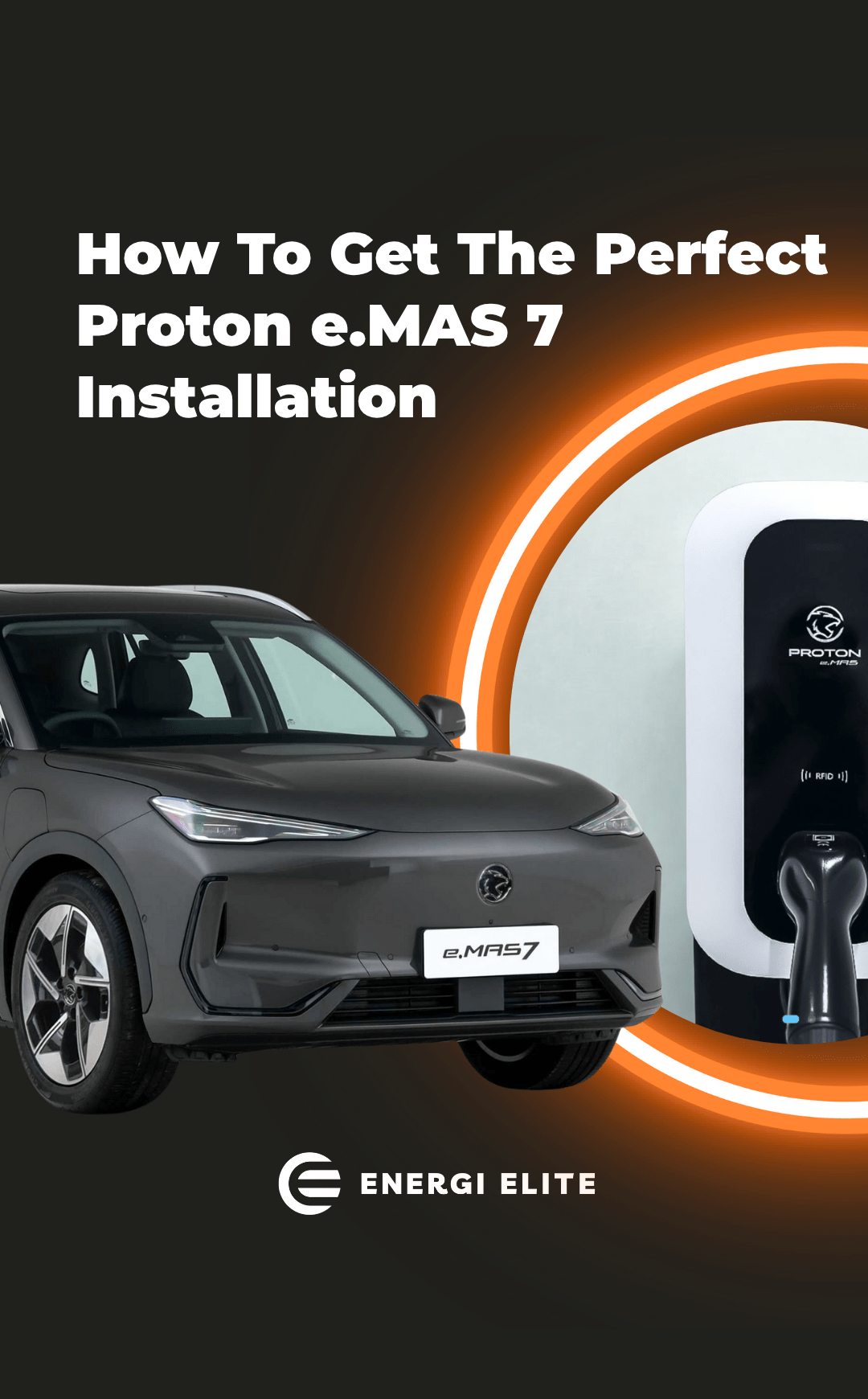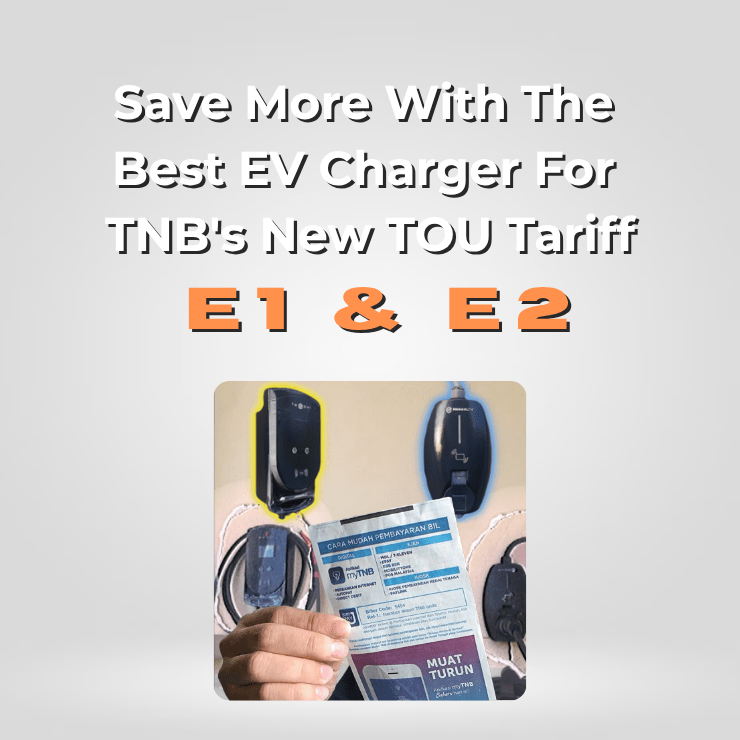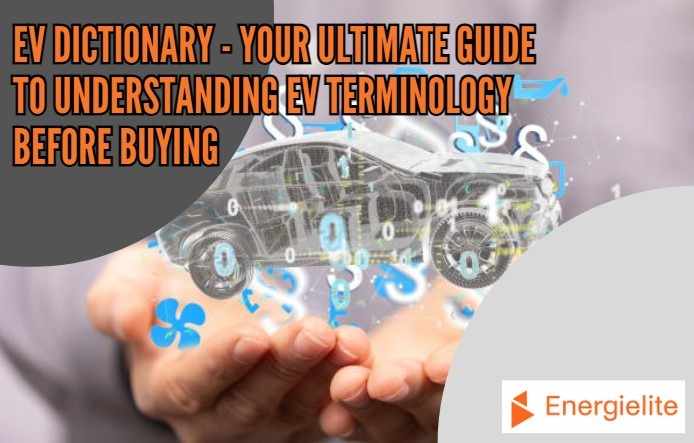
Overview
Are you looking forward to the electric vehicle shift? With the increasing presence of electric scooters, bicycles, and cars on our streets, it’s evident that the future of transportation lies in electricity. However, the jargon and ideas tied to electric mobility can be quite perplexing and overwhelming for many.
Comprehensive Guide to Electric Car Terminology and Concepts

To simplify your understanding, we’ve compiled a thorough guide that encompasses all the crucial information on electric car terminology, electric mobility acronyms, key concepts, and frequently asked questions.
Whether you’re an experienced EV enthusiast or just beginning to explore, this guide will make your journey into the world of electric vehicles more accessible.
Key Takeaways
- Get to know electric vehicle terminology for a deeper grasp of the electric vehicle shift.
- Master electric mobility acronyms to stay informed about industry developments.
- Grasp crucial terms and FAQs to make well-informed choices regarding electric vehicles.
Electric Car Vocabulary

If you’re a newcomer to the realm of electric vehicles, you might find yourself inundated with unfamiliar terminology. To ease your journey, we’ve compiled a selection of essential terms that will prove invaluable.
Electric Motor
Electric propulsion serves as the beating heart of an electric vehicle, providing the power to move it forward. In contrast to traditional internal combustion engines, electric motors offer instantaneous torque, delivering swift acceleration and a serene, emission-free driving experience.
Torque
Instant torque is the force responsible for propelling your electric car. In an electric vehicle, you experience 100% of this force immediately, resulting in rapid acceleration that can take you from 0 to 62 mph in under 8 seconds in most EVs.
Charging Cycle
A charge cycle represents each instance of fully recharging and discharging your electric vehicle’s battery. Completing a charge cycle involves replenishing the battery to its full capacity from any previous level.
Lifecycle
Battery lifespan refers to the total number of charge cycles an EV battery can endure while retaining 100% of its capacity. Most contemporary lithium-ion batteries have a lifespan of 8 to 10 years, equivalent to approximately 3,000 full charge cycles. After this period, battery degradation becomes apparent, resulting in a capacity of less than 100%.
Memory Effect
The memory effect entails a decrease in battery capacity due to incomplete charging. It occurs when a battery is recharged without being fully depleted. However, modern lithium-ion batteries used in electric vehicles exhibit minimal memory effect, allowing for frequent charging without significant impact on the battery.
Regenerative Braking
Regenerative braking is a system that harnesses kinetic energy during deceleration or braking, converting it into electricity to recharge the battery in electric or hybrid vehicles. This process effectively extends your vehicle’s range by capturing energy that would otherwise be lost.
Range Anxiety
Range anxiety is the increasing assurance among electric car drivers that their vehicles will comfortably reach their destinations. With advancements in vehicle technology and the expanding charging infrastructure, concerns about running out of power are diminishing.
Familiarizing yourself with these fundamental electric car terms will empower you to comprehend your electric vehicle better and make informed decisions regarding its charging and maintenance.
Acronyms for Electric Mobility
New to the electric vehicle realm and puzzled by the plethora of acronyms? No need to fret; we’ve got you covered! Here are some frequently employed acronyms in the electric mobility domain:
HEV (Hybrid Electric Vehicle)
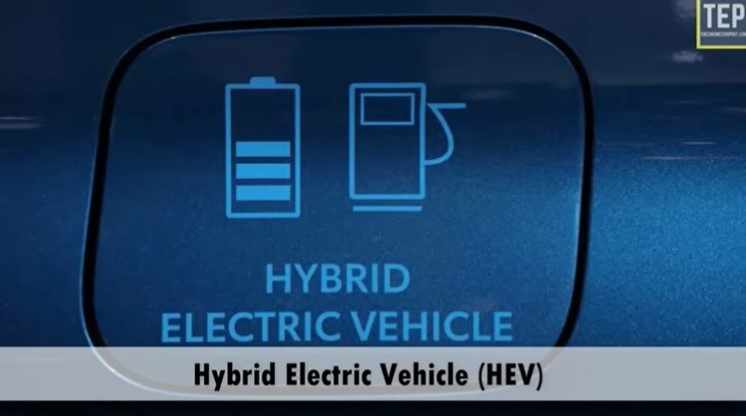
HEV, an abbreviation for Hybrid Electric Vehicle, represents a class of traditional hybrids that employ both an internal combustion engine and an electric motor.
These hybrids eliminate the need for external recharging, relying on the regenerative braking system and the internal combustion engine for battery replenishment. It’s worth noting that HEVs can operate in electric mode for brief distances and at lower speeds.
PHEV (Plug-in Hybrid Electric Vehicle)
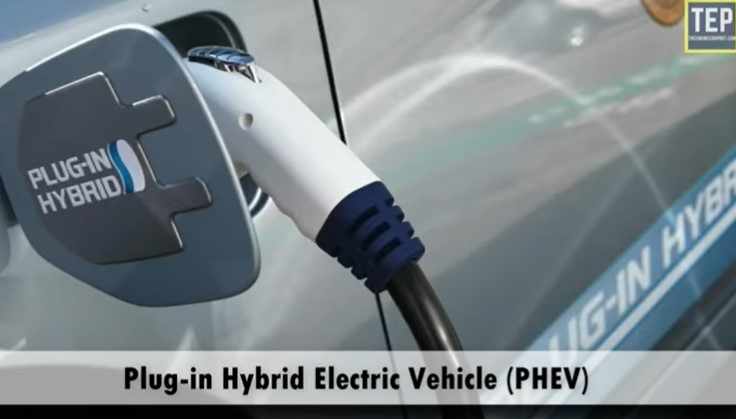
PHEV, an abbreviation for Plug-in Hybrid Electric Vehicle, shares similarities with HEVs but distinguishes itself by featuring larger batteries that can be charged through an electric grid connection.
PHEVs offer the flexibility to operate in 100% electric mode for a limited range of approximately 32 miles, in hybrid mode, or solely with the combustion engine.
MHEV (Mild Hybrid Electric Vehicle)
MHEV, an acronym for Mild Hybrid Electric Vehicle, falls into the category of “semi-hybrids” equipped with a 48-volt system that delivers modest supplementary power and torque under specific conditions. The primary power source in MHEVs remains the internal combustion engine.
BEV (Battery Electric Vehicle)
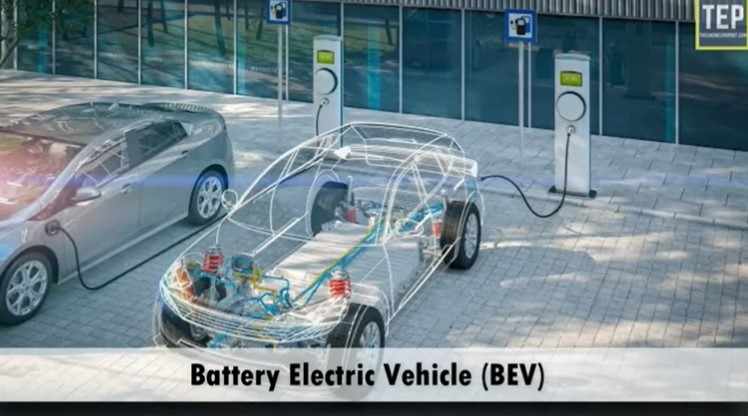
BEV, short for Battery Electric Vehicle, represents fully electric automobiles relying solely on the energy stored in their batteries, typically lithium-ion batteries. To replenish their power, BEVs necessitate connection to the electric grid.
FCEV (Fuel Cell Electric Vehicle)
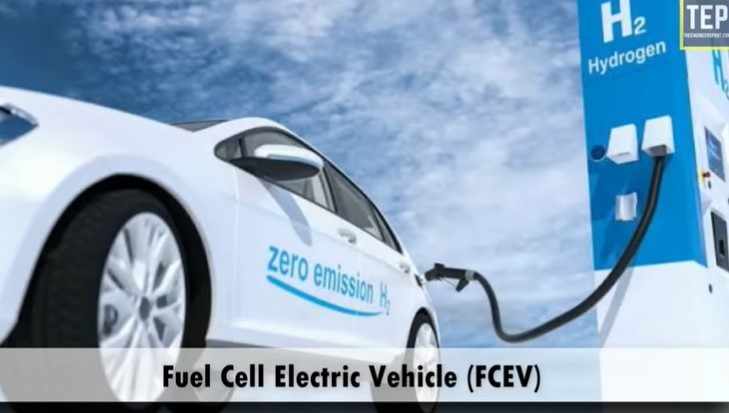
FCEV, an abbreviation for Fuel Cell Electric Vehicle, utilizes hydrogen as its fuel source to generate the electricity necessary for propulsion. These vehicles produce only water vapor as emissions, classifying them as zero-emission transportation.
Z.E. or ZEV (Zero Emissions Vehicle)
Z.E. or ZEV represents Zero Emissions Vehicle, encompassing vehicles that do not release CO2 or pollutants. This category includes both fully electric vehicles and those powered by hydrogen fuel cells.
AVAS (Acoustic Vehicle Alerting System) or PWS (Pedestrian Warning System)
AVAS or PWS, standing for Acoustic Vehicle Alerting System or Pedestrian Warning System, is a mandatory feature in all electric vehicles. Its purpose is to provide an audible warning to pedestrians, enhancing safety and preventing potential collisions with electric cars.
NEDC (New European Driving Cycle) range
NEDC, the acronym for New European Driving Cycle, was the standard methodology for assessing vehicle consumption and range until September 1, 2018.
WLTP (Worldwide harmonised Light vehicles Test Procedure)
WLTP, which stands for Worldwide harmonised Light vehicles Test Procedure, serves as the present European homologation protocol, offering a more realistic assessment of vehicle consumption, emissions, and range compared to the NEDC protocol.
EPA and JC08 ranges
EPA and JC08 ranges pertain to the typical range of an electric car as determined by the official certification methods of the US Environmental Protection Agency (EPA) and the Japanese type approval procedure (JC08), respectively.
CPO (Charge Point Operator)
CPO, an abbreviation for Charge Point Operator, designates entities responsible for the management of EV charging stations. These operators can be private companies, public entities like local councils, or specialized firms focused on charging infrastructure.
eMSP (eMobility Service Provider)
eMSP stands for eMobility Service Provider, representing companies that offer electric car drivers an app for accessing and utilizing charging stations.
BMS (Battery Management System)
BMS, short for Battery Management System, is the electrical system tasked with overseeing battery charging and discharging.
EMS (Energy Management System)
EMS, which stands for Energy Management System, plays a pivotal role in Smart Grids, encompassing a multitude of energy measures such as energy-efficient resources, smart meters, and renewable energy sources.
Smart Grids
Smart Grids encompass diverse technologies like V2G (Vehicle to Grid), V2H (Vehicle to Home), and V2B (Vehicle to Building). V2G involves bidirectional charging management between electric cars and the grid.
V2H is a variant where electric cars serve as electrical storage for homes. V2B is a variant applicable to buildings or industries with electric vehicle fleets.
SOC (State of Charge)
SOC, denoting State of Charge, serves as an indicator of an electric car’s available charge level, expressed as a percentage. DOD (Depth of Discharge) measures the depth of battery discharge.
Having acquainted yourself with these commonly used acronyms in the electric mobility domain, you’ll be better equipped to understand the specifications and features of electric vehicles.
Essential Terms
To gain a comprehensive grasp of the electric vehicle world, it’s vital to become familiar with essential terms. Understanding connector types like CHAdeMO, Mennekes, CCS, Yazaki, and Schuko is crucial.
You should also grasp the various charging types and modes, which determine the charging power level. Armed with this knowledge, you can confidently navigate the realm of electric vehicle charging, alleviating range anxiety.
Other noteworthy terms include range, zero emissions, torque, and renewable energy. It’s also worth noting that many charging stations now support contactless payment, simplifying the charging process on the go.
Conclusion
In summary, the world of electric mobility is expanding with a diverse range of acronyms and terms. Understanding these terms is essential for making informed choices about electric vehicles and charging.
The future of electric mobility, including Smart Grids and advanced technologies, is promising. As the electric vehicle infrastructure grows, mastering this terminology is the key to embracing a sustainable and efficient transportation mode. Whether you’re new to electric vehicles or an enthusiast, fluency in this language empowers you to unlock their full potential.
Frequently Asked Questions
Common Terms Used to Describe Electric Vehicles
If you’re new to the world of electric vehicles, you might be overwhelmed by the number of terms and acronyms used to describe them.
Some common terms include Battery Electric Vehicle (BEV), Plug-in Hybrid Electric Vehicle (PHEV), and Hybrid Electric Vehicle (HEV).
A BEV is a vehicle that runs entirely on electricity, while a PHEV can run on both electricity and gasoline. An HEV, on the other hand, uses both an electric motor and a gasoline engine to power the vehicle.
Range Anxiety in Electric Vehicles
Range anxiety is a term used to describe the fear or uncertainty that some people feel about the limited range of electric vehicles. While the range of electric vehicles has been steadily increasing over the years, some people still worry about running out of power before they reach their destination. However, with the growing number of charging stations and longer ranges of newer electric vehicles, range anxiety is becoming less of a concern.
Difference Between Hybrid and Electric Vehicles
One of the most significant differences between hybrid and electric vehicles is the way they are powered. Hybrid vehicles use both an electric motor and a gasoline engine to power the vehicle, while electric vehicles run entirely on electricity. Hybrid vehicles typically have smaller batteries than electric vehicles and cannot be charged from an external power source.
Common Charging Terms for Electric Vehicles
When it comes to charging your electric vehicle, there are several terms you should be familiar with. Level 1 charging refers to charging your vehicle using a standard 120-volt household outlet, while Level 2 charging uses a 240-volt charging station. DC Fast Charging is the fastest way to charge your electric vehicle and can provide up to 80% of the battery’s capacity in as little as 30 minutes.
Popular Electric Vehicle Models
Some of the most popular electric vehicle models currently available include the Tesla Model 3, Nissan Leaf, Chevrolet Bolt, and the Ford Mustang Mach-E. Each of these vehicles has its own unique features and benefits, so it’s essential to do your research to find the one that best suits your needs.
Factors to Consider When Choosing an Electric Vehicle
When choosing an electric vehicle, there are several factors you should consider. These include the range of the vehicle, the availability of charging stations in your area, the cost of the vehicle, and the features and amenities offered. It’s also essential to consider your driving habits and needs to find the electric vehicle that best fits your lifestyle.


